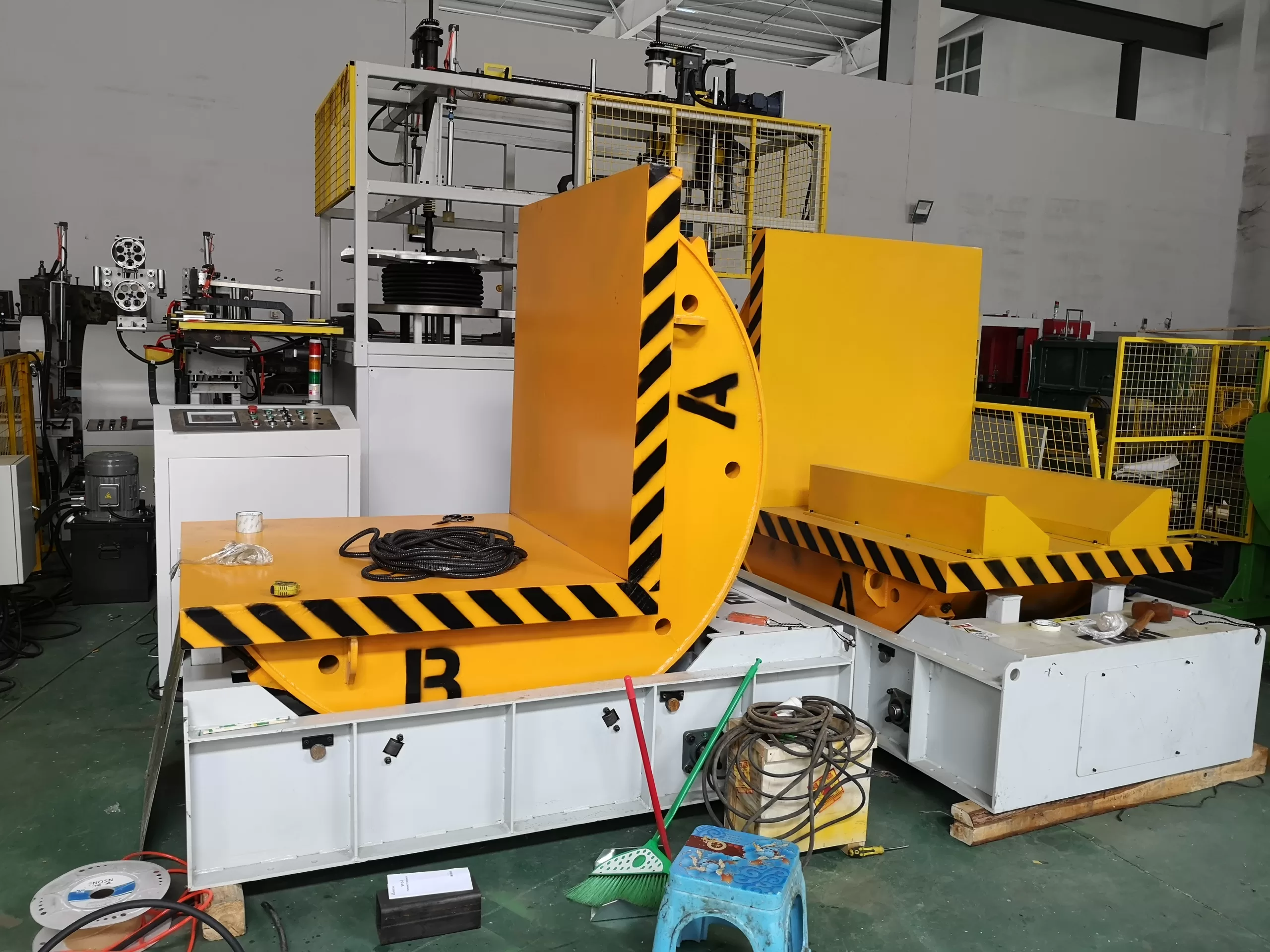When investing in a coil upender, understanding its maintenance requirements is crucial for ensuring long-term efficiency and minimizing downtime. Coil upenders, whether mechanical, hydraulic, or automatic, are vital machines used in industries dealing with heavy coils, such as steel, aluminum, and paper. Although these machines make the process of rotating and tilting coils significantly easier, they require consistent upkeep to maintain their performance and longevity.
This article will dive into how the maintenance needs of different types of coil upenders compare, helping you choose the right solution that aligns with your operational demands while keeping maintenance costs low.
Regardless of the type of coil upender, all machines require a certain level of preventive maintenance. This includes regularly checking moving parts, lubricating mechanical components, and ensuring all electrical or hydraulic systems are functioning properly. Ignoring maintenance can result in costly repairs, increased downtime, and even accidents in the workplace.
The specifics of these tasks, however, vary based on the type of coil upender in question. Let's compare the maintenance requirements across different types of coil upenders to help you better understand what each entails.
Mechanical coil upenders are typically considered the most straightforward option when it comes to both operation and maintenance. Since they rely on a system of gears, motors, and mechanical leverage to rotate coils, their design tends to be simple, with fewer complex parts compared to hydraulic or automated systems.
Mechanical upenders require less frequent maintenance than their hydraulic counterparts, making them an ideal choice for operations where downtime needs to be minimized. Their simplicity and durability mean that they are generally easier to maintain, but periodic inspections are still critical to avoid breakdowns.
Hydraulic coil upenders offer smooth, controlled movement, making them ideal for applications requiring precision. However, the increased complexity of the hydraulic system means that maintenance is more demanding compared to mechanical upenders. Hydraulic systems rely on a network of pumps, valves, cylinders, and fluid reservoirs to operate, and all of these components must be maintained regularly to avoid issues.
While hydraulic coil upenders offer superior control and are well-suited for delicate materials, their maintenance demands are higher. Neglecting maintenance on a hydraulic system can lead to costly repairs and significant downtime.
Automatic coil upenders integrate both mechanical and hydraulic components with advanced automation controls, such as programmable logic controllers (PLC). While automation enhances efficiency and reduces the need for operator intervention, it also adds a layer of complexity to maintenance. Automatic systems often include additional features like sensors, automated safety mechanisms, and control panels that need regular upkeep.
While automatic coil upenders provide maximum operational efficiency and safety, they also require specialized maintenance. For businesses with high production volumes and complex workflows, the increased maintenance requirements are often worth the productivity gains, but they do need more attention to avoid unexpected breakdowns.
When comparing the maintenance costs of manual and automatic systems, it’s clear that automation introduces more complexity. The initial investment in an automatic upender is typically higher, and this extends to maintenance costs, as more components require regular attention.
Manual systems like mechanical upenders, on the other hand, tend to have lower maintenance costs because of their simplicity. For businesses with smaller budgets or those that do not require high levels of automation, manual systems offer a balance between operational efficiency and lower ongoing costs.
Key factors influencing maintenance costs:
One of the key considerations in maintaining coil upenders is minimizing downtime. Every hour a machine is offline for maintenance or repairs translates to lost productivity. Mechanical coil upenders typically experience less downtime because their simpler systems are easier to repair and maintain.
In contrast, hydraulic and automatic systems may require longer periods of downtime for repairs, especially if a problem arises in the hydraulic or electrical components. However, businesses using automatic systems often offset this with the increased productivity that automation brings when the machine is functioning optimally.
To minimize maintenance costs and downtime, adopting a preventive maintenance strategy is essential. Preventive maintenance involves regularly scheduled checks and service to catch potential issues before they become major problems. This approach is particularly important for hydraulic and automatic coil upenders, where a single malfunctioning component can lead to significant operational disruptions.
Relying on reactive maintenance, where problems are addressed only after they occur, can lead to more frequent downtime and higher costs in the long run, particularly for complex systems like hydraulic or automatic upenders.
Another important consideration when comparing coil upenders is the level of maintenance training and support offered by the supplier. Some suppliers offer on-site training for your team, helping them understand how to properly maintain the machine, identify potential issues, and perform routine maintenance tasks.
Suppliers that provide robust after-sales support can help ensure your coil upender operates smoothly for years with minimal issues.
The maintenance requirements of different coil upenders vary significantly depending on their type and complexity. Mechanical coil upenders are the simplest and easiest to maintain, requiring minimal upkeep, while hydraulic and automatic upenders demand more frequent and specialized maintenance. Each type has its advantages, and the right choice for your business depends on your operational needs, budget, and how much downtime you're willing to tolerate.
By understanding the maintenance needs of your coil upender, you can create an effective preventive maintenance plan that minimizes downtime and ensures long-term productivity. Whether you opt for a simple mechanical system or a more advanced automatic model, proper maintenance is key to getting the most out of your investment.
